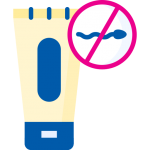Facilities
Birth Control Methods

Many elements need to be considered by women, men, or couples at any given point in their lifetimes when choosing the most appropriate contraceptive method. These elements include safety, effectiveness, availability (including accessibility and affordability), and acceptability. Voluntary informed choice of contraceptive methods is an essential guiding principle, and contraceptive counseling, when applicable, might be an important contributor to the successful use of contraceptive methods.
Methods Contraceptive

In choosing a method of contraception, dual protection from the simultaneous risk for HIV and other STDs also should be considered. Although hormonal contraceptives and IUDs are highly effective at preventing pregnancy, they do not protect against STDs, including HIV. Consistent and correct use of the male latex condom reduces the risk for HIV infection and other STDs, including chlamydia infection, gonococcal infection, and trichomoniasis.

Intrauterine Device(IUD)
This small, T-shaped device is made from made of material containing progesterone hormone or plastic and copper and is fitted inside a woman’s uterus by a trained healthcare provider. It’s a long-acting and reversible method of contraception, which can stay in place for three to 10 years, depending on the type. Some IUDs contain hormones that are gradually released to prevent pregnancy. The IUD can also be effective emergency contraception if fitted by a healthcare professional within five days (120 hours) of having unprotected sex. IUDs containing coppers are 99% effective and the ones containing hormones are 99.8% effective, so you’re about as protected as you possibly can be by a contraceptive method.

Contraceptive
Implant
In this method, a small, flexible rod is placed under the skin in a woman’s upper arm, releasing a form of the hormone progesterone. The hormone stops the ovary from releasing the egg and thickens the cervical mucus making it difficult for sperm to enter the womb. The implant requires a small procedure using a local anesthetic to fit and remove the rod and needs to be replaced after three years. Pros of the implant include: Highly effective; doesn’t interrupt sex; is a long-lasting, reversible contraceptive option. The implant is a single, thin rod that is inserted under the skin of a women’s upper arm. The rod contains a progestin that is released into the body over 3 years. Typical use failure rate: 0.1%.1

Contraceptive
Patch
This skin patch is worn on the lower abdomen, buttocks, or upper body (but not on the breasts). This method is prescribed by a doctor. It releases hormones progestin and estrogen into the bloodstream. You put on a new patch once a week for three weeks. During the fourth week, you do not wear a patch, so you can have a menstrual period. Typical use failure rate: 7%.1 Voluntary informed choice of contraceptive methods is an essential guiding principle, and contraceptive counseling, when applicable, might be an important contributor to the successful use of contraceptive methods.

Condom
The condom is the only form of contraception that protects against most STIs as well as prevents pregnancy. This method of contraception can be used on-demand, is hormone-free, and can easily be carried with you. And it comes in male and female varieties. Typical use failure rate: 13%.1 Condom can only be used once. You can buy condoms, KY jelly, or water-based lubricants.

Contraceptive Pill
The oral contraceptive pill is the most commonly reported method of contraception used by women. There are a few different types of pills to choose from, so it’s about finding the one that’s right for you. The combined pill contains estrogen and progestin and the mini pill contains only one hormone, progestin. The pill can have many benefits, however, remembering to take it on time is a must.

Contraceptive Inject
The injection contains a synthetic version of the hormone progestogen. It is given into a woman’s buttock or the upper arm, and over the next 12 weeks, the hormone is slowly released into your bloodstream.

Spermicides
Spermicides—These products work by killing sperm and come in several forms—foam, gel, cream, film, suppository, or tablet. They are placed in the vagina no more than one hour before intercourse. You leave them in place at least six to eight hours after intercourse. You can use a spermicide in addition to a male condom, diaphragm, or cervical cap. They can be purchased at drug stores. Typical use failure rate: 21%.1

Diaphragm
A diaphragm is a small, soft silicon dome is placed inside the vagina to stop sperm from entering the uterus. It forms a physical barrier between the man’s sperm and the woman’s egg, like a condom.
Contraceptive Ring
This method consists of a flexible plastic ring constantly releasing hormones that is placed in the vagina by the woman. It stays in place for three weeks, and then you remove it, take a week off then pop another one in. The ring releases the hormones estrogenic and progestogen. These are the same hormones used in the combined oral contraceptive pill, but at a lower dose.

Sterilization
Sterilization is the process of completely taking away the body’s ability to reproduce through open or minimal invasion surgery. It is a permanent method of contraception, suitable for people who are sure they never want children or do not want any more children. Sterilization is available for both women and men and is performed in a hospital with general anesthesia.
